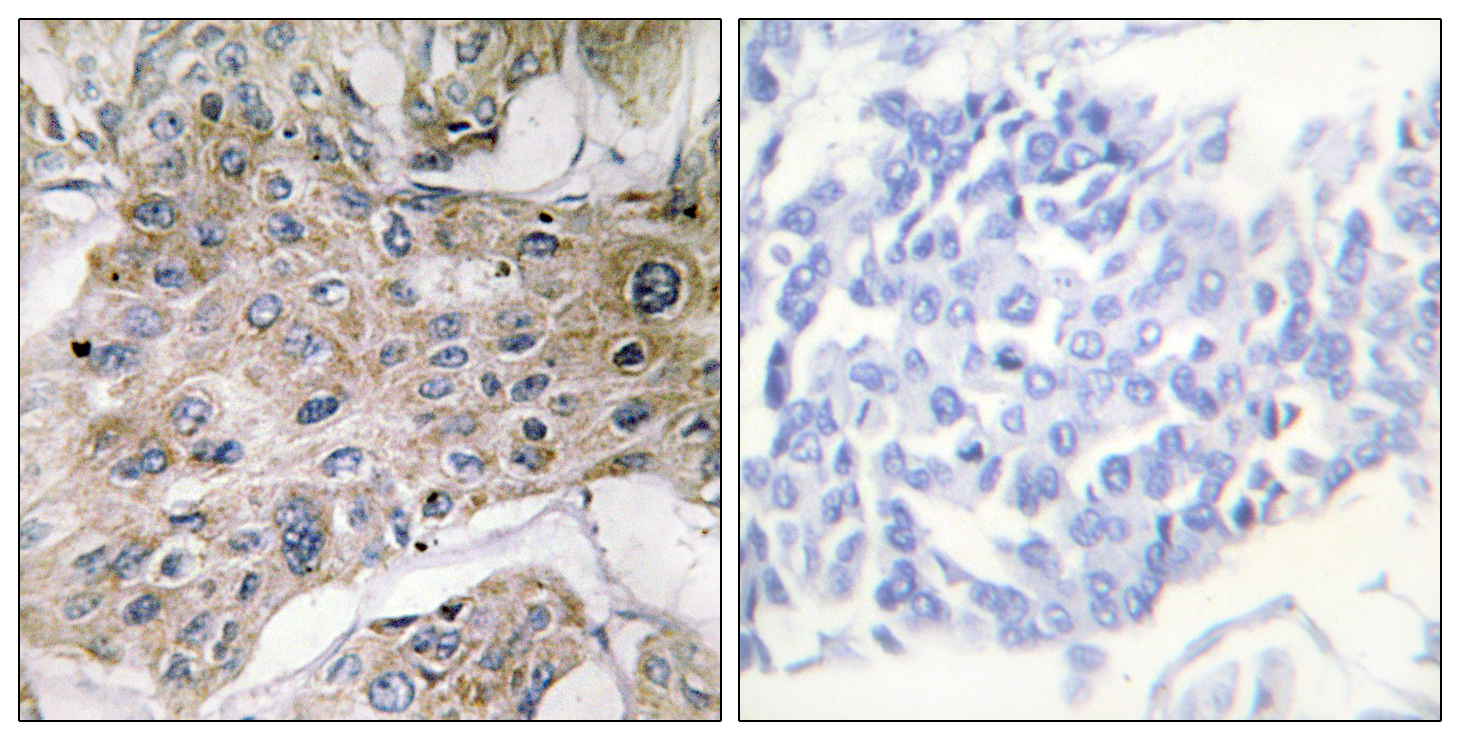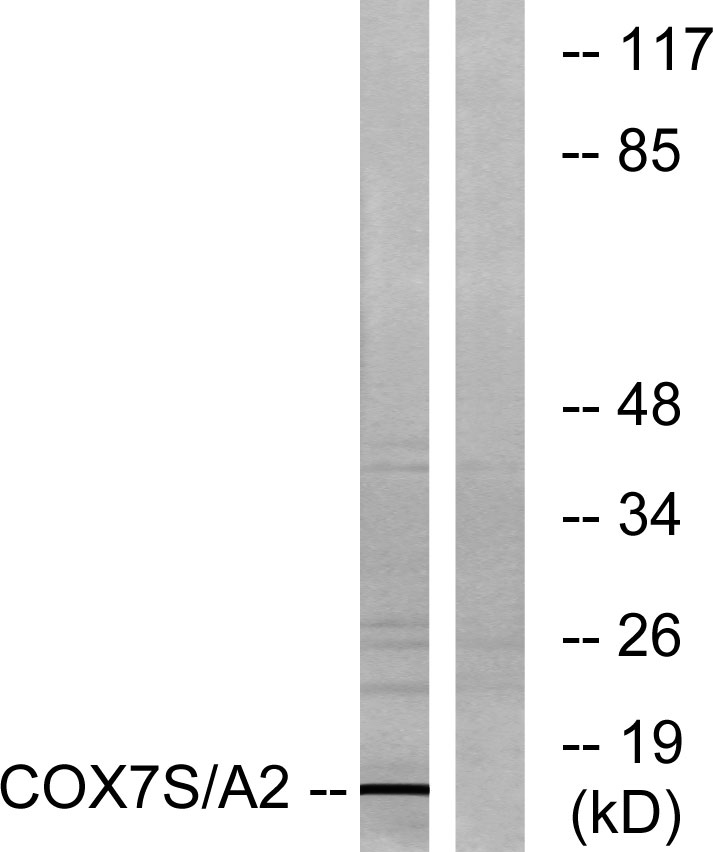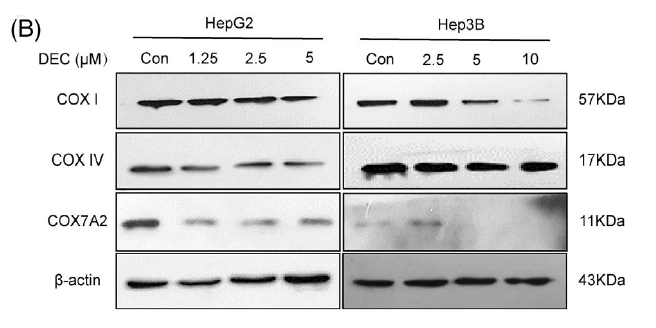COX7a2/3 Polyclonal Antibody
- Catalog No.:YT1079
- Applications:WB;IHC;IF;ELISA
- Reactivity:Human;Mouse;Rat
- Target:
- COX7a2/3
- Gene Name:
- COX7A2/COX7A2P2
- Protein Name:
- Cytochrome c oxidase subunit 7A2/3 mitochondrial
- Human Gene Id:
- 1347
- Human Swiss Prot No:
- O60397/P14406
- Mouse Gene Id:
- 12866
- Rat Gene Id:
- 29507
- Rat Swiss Prot No:
- P35171
- Immunogen:
- The antiserum was produced against synthesized peptide derived from human COX7S/A2. AA range:1-50
- Specificity:
- COX7a2/3 Polyclonal Antibody detects endogenous levels of COX7a2/3 protein.
- Formulation:
- Liquid in PBS containing 50% glycerol, 0.5% BSA and 0.02% sodium azide.
- Source:
- Polyclonal, Rabbit,IgG
- Dilution:
- WB 1:500 - 1:2000. IHC 1:100 - 1:300. ELISA: 1:10000.. IF 1:50-200
- Purification:
- The antibody was affinity-purified from rabbit antiserum by affinity-chromatography using epitope-specific immunogen.
- Concentration:
- 1 mg/ml
- Storage Stability:
- -15°C to -25°C/1 year(Do not lower than -25°C)
- Other Name:
- COX7A2P2;COX7A3;COX7AL2;COX7AP2;Putative cytochrome c oxidase subunit 7A3; mitochondrial;Cytochrome c oxidase subunit VIIa 3;COX7A2;COX7AL;Cytochrome c oxidase subunit 7A2, mitochondrial;Cytochrome c oxidase subunit VIIa-liver/hear
- Observed Band(KD):
- 12kD
- Background:
- Cytochrome c oxidase, the terminal component of the mitochondrial respiratory chain, catalyzes the electron transfer from reduced cytochrome c to oxygen. This component is a heteromeric complex consisting of three catalytic subunits encoded by mitochondrial genes, and multiple structural subunits encoded by nuclear genes. The mitochondrially-encoded subunits function in electron transfer, while the nuclear-encoded subunits may function in the regulation and assembly of the complex. This nuclear gene encodes polypeptide 2 (liver isoform) of subunit VIIa, with this polypeptide being present in both muscle and non-muscle tissues. In addition to polypeptide 2, subunit VIIa includes polypeptide 1 (muscle isoform), which is present only in muscle tissues, and a related protein, which is present in all tissues. Alternative splicing results in multiple transcript variants. Related pseudogenes have been identified on chromosomes 4 and 14.
- Subcellular Location:
- Mitochondrion inner membrane .
The nature compound dehydrocrenatidine exerts potent antihepatocellular carcinoma by destroying mitochondrial complexes in vitro and in vivo 2022 Feb 02. WB Human
- June 19-2018
- WESTERN IMMUNOBLOTTING PROTOCOL
- June 19-2018
- IMMUNOHISTOCHEMISTRY-PARAFFIN PROTOCOL
- June 19-2018
- IMMUNOFLUORESCENCE PROTOCOL
- September 08-2020
- FLOW-CYTOMEYRT-PROTOCOL
- May 20-2022
- Cell-Based ELISA│解您多样本WB检测之困扰
- July 13-2018
- CELL-BASED-ELISA-PROTOCOL-FOR-ACETYL-PROTEIN
- July 13-2018
- CELL-BASED-ELISA-PROTOCOL-FOR-PHOSPHO-PROTEIN
- July 13-2018
- Antibody-FAQs
- Products Images

- Immunohistochemistry analysis of paraffin-embedded human breast carcinoma tissue, using COX7S/A2 Antibody. The picture on the right is blocked with the synthesized peptide.

- Western blot analysis of lysates from rat heart cells, using COX7S/A2 Antibody. The lane on the right is blocked with the synthesized peptide.

- The nature compound dehydrocrenatidine exerts potent antihepatocellular carcinoma by destroying mitochondrial complexes in vitro and in vivo 2022 Feb 02. WB Human



